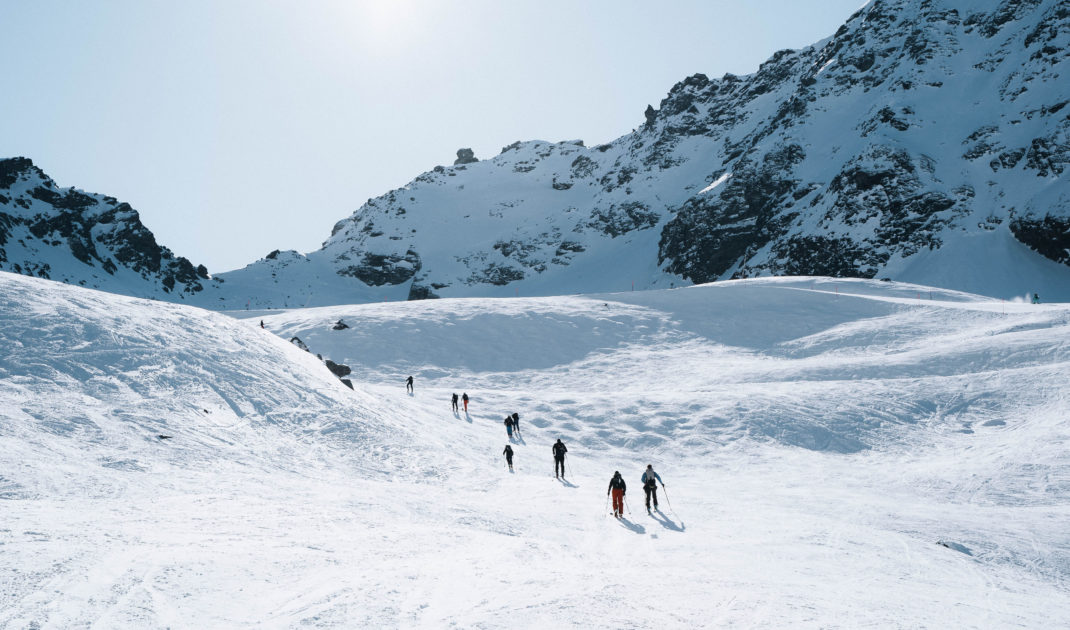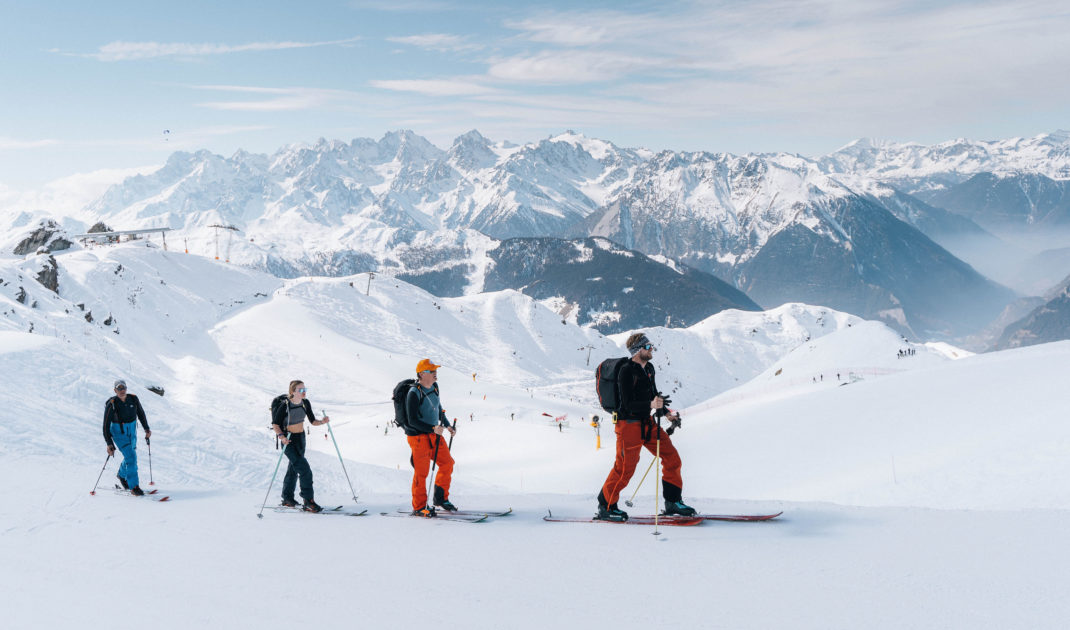Building endurance power for Everest in the Alps
Whether you’ve been training from the start or you’re joining the challenge now, this phase is where your preparation becomes powerful.
Months 3 and 4 are where your training starts to feel a lot more like the challenge itself.
Unlike Months 1–2, where the goal is simply building consistency, Months 3–4 introduce longer sessions, conditioning under fatigue, and more realistic training that mirrors the cumulative challenge of four days in the Alps.
This phase is about building the engine you’ll rely on for spending 10- 12 hours out on the mountain each day, climbing towards a total of 8,848m – the height of Everest.
It sounds huge. But remember:
- The focus is predominantly uphill
- The pace is set so the whole team can stay together
- You don’t need to be an elite athlete or expert skier
You do need commitment, consistency, and a clear “why”.
We asked EiA trainer Becky Scott how to turn your solid foundation into real endurance power in Months 3 and 4 – without taking over your whole life.

1. Build Endurance Power
Your goal in this phase is simple:
get used to moving at a steady effort for longer.
By now, you’ll hopefully be comfortable with around 60 minutes of continuous exercise. In Months 3- 4, aim to build towards:
- One longer session each week (90 minutes to 2 hours)
- One to two moderate sessions (45- 60 minutes)
Good options include:
- Hill walking or hiking
- Longer bike rides
- Stair climbs or incline treadmill walking
- Rowing or cross-trainer sessions
You’re not chasing speed. You’re training the ability to keep going.
“Think about effort you could hold a conversation at,” says Becky.
“That’s the kind of pace you’ll need during long days in the Alps.”
Remember: on the challenge, you’ll be out for 10- 12 hours a day, climbing steadily uphill with breaks to refuel, layer up or down, and take in the views. Your training now is simply preparing your body to move at that kind of sustainable effort.
Whenever you can, take your longer sessions outside. Uneven ground, weather and terrain all help build the kind of resilience you’ll draw on in Verbier.

2. Strength That Goes the Distance
Stronger legs and a stronger core don’t just make the climbs easier – they also help you recover better between days, and protect your joints over four days of effort.
In Months 3-4, focus on strength that supports real movement on the mountain:
- Step-ups (weighted if you can)
- 3 sets of 10-12 each leg
- Use a step, bench or low box
- Split squats or lunges
- 3 sets of 8-10 each leg
- Great for single-leg strength and balance
- Hip hinge movements (deadlifts or Romanian deadlifts)
- 3 sets of 6-8
- Strengthen the back of the legs and glutes
- Core work
- Planks, dead bugs, side planks
- 2-3 sets, 20-40 seconds each
“If you only have time for a couple of moves, choose step-ups and a good core exercise,” Becky says.
“Those two alone will take you a long way in ski touring.”
Two strength sessions per week is ideal. Keep the movements controlled and focus on good form – you’re building durability, not chasing personal bests.
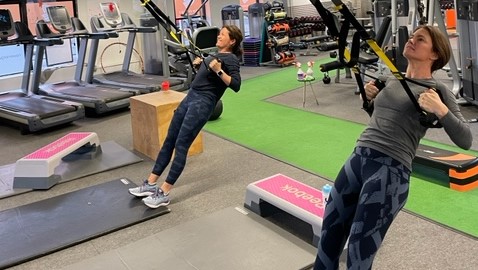
3. Conditioning: Fatigue-Proof Your Legs
Conditioning sessions are where strength and endurance meet. They give you a taste of what it feels like to work under fatigue – just as you will on the later ascents each day.
Once a week, try one of the following:
Hill repeats
- Walk or jog uphill for 2-4 minutes
- Walk back down to recover
- Repeat 4-6 times
Weighted pack walks
- Load a rucksack to 8-12kg
- Walk for 60-90 minutes at a steady pace
- Include hills if you can
Simple strength circuit
Rotate between, for example:
- Step-ups
- Rows or presses
- Lunges
- Carries (farmer’s carry with dumbbells or a loaded bag)
Work for 30-40 seconds per exercise, rest briefly, then repeat for 20-30 minutes.
The aim isn’t to destroy yourself – it’s to teach your body that it can keep moving when it’s tired.
Training outdoors when possible is a bonus. Cold, wind, rain and varied ground all help mimic the realities of a mountain day.
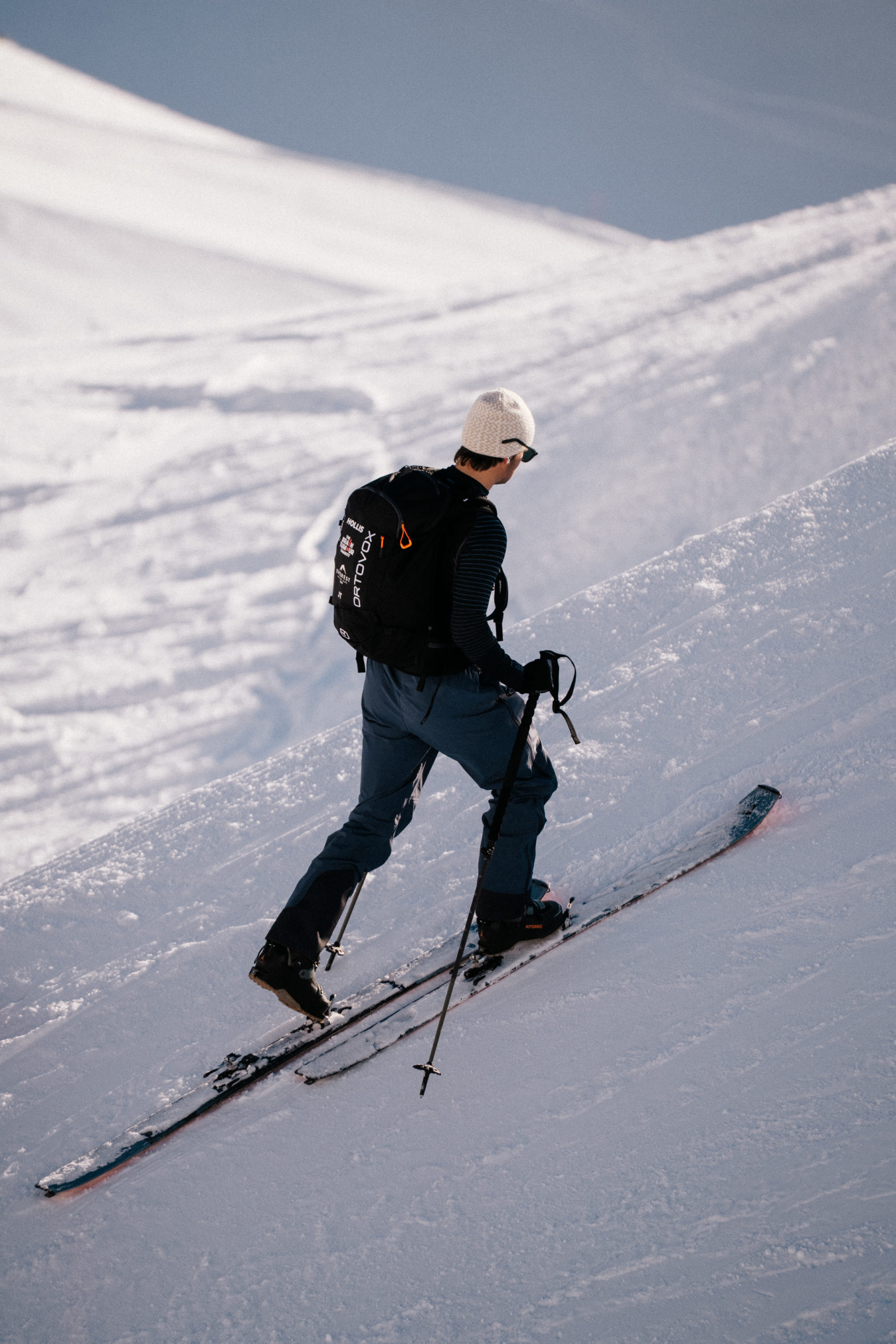

4. Train Your Mind for Long Days
This is the phase where many people experience a wobble. The novelty has worn off, life is busy, and the long, dark evenings make it harder to get out the door.
That’s where mindset becomes as important as muscles.
“This event is achievable for anyone – regardless of your starting point,” Becky says.
“The real challenge isn’t just physical; it’s mental. You’re practising the mindset to keep going when it would be easier to stop.”
A few ideas that help:
- Schedule your sessions and treat them like meetings
- Pair long sessions with a podcast, audiobook, or good playlist
- Train with others when you can – a friend, a group, or fellow EiA participants
- Keep a simple log: write down what you did, how it felt, and one thing you’re proud of
And remember: on the challenge itself, the pace is set for the team, not the fastest person. Your job is not to be the strongest; it’s to be prepared, present, and willing to keep moving.
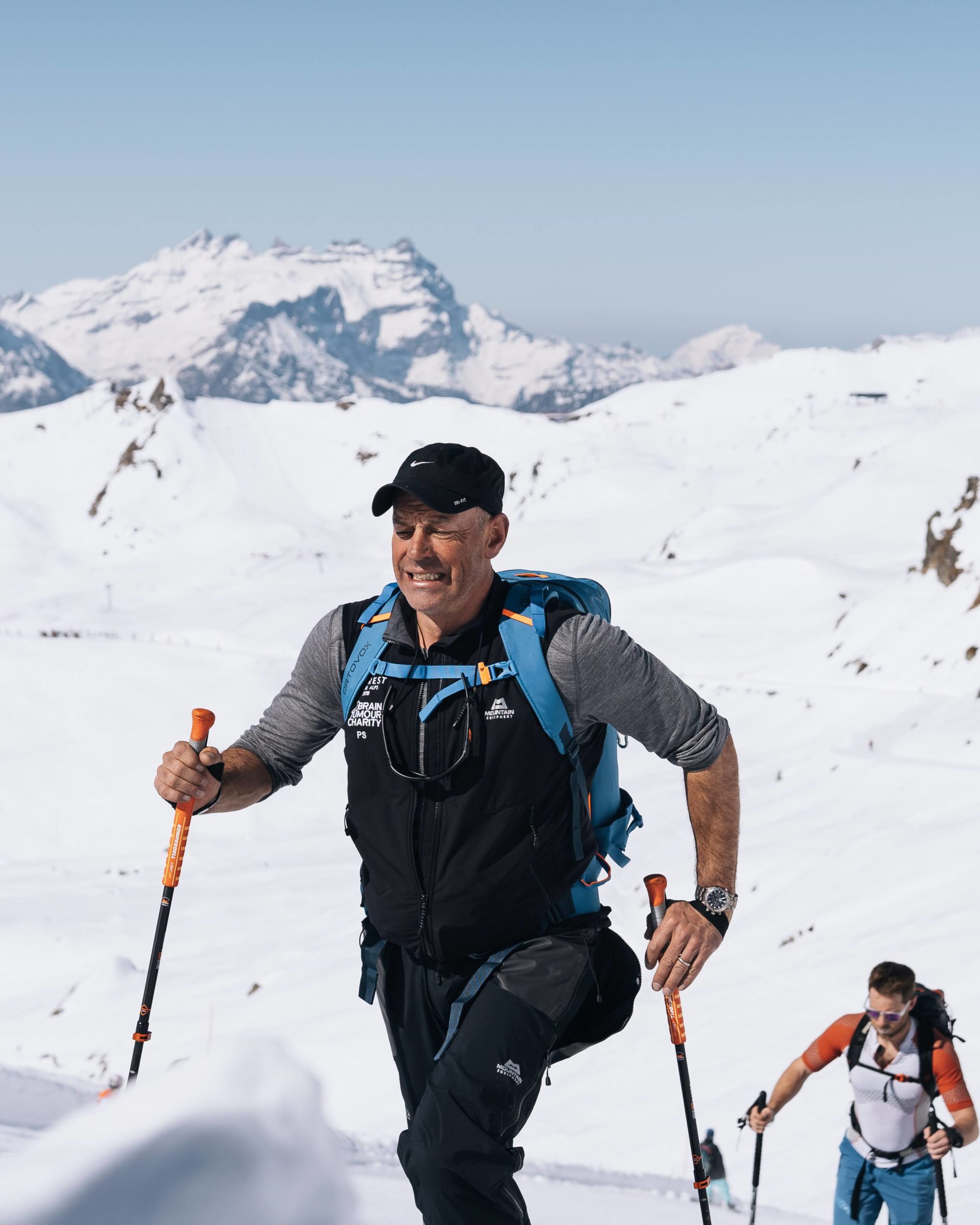
5. Fuel, Recover, Repeat
You don’t need a strict nutrition plan, but you do need a few solid habits – especially as training volume creeps up.
Becky’s simple guidelines:
- Eat regularly and include protein at each meal (to help muscles repair)
- Have a small carb-rich snack before longer sessions – a banana, toast, oat bar
- Drink water consistently through the day, and bring a bottle on sessions
- After tough or long sessions, aim to eat within an hour – something with carbs + protein
- Prioritise sleep wherever possible
For more info on how to stay fueled and hydrated see this post by our partners Precision Fuel and Hydration.
Recovery is also where you can start to build in some mobility for key areas:
- Hips and glutes
- Calves and ankles
- Upper back
Even 5-10 minutes of stretching or mobility work after a session can make the next one feel better.
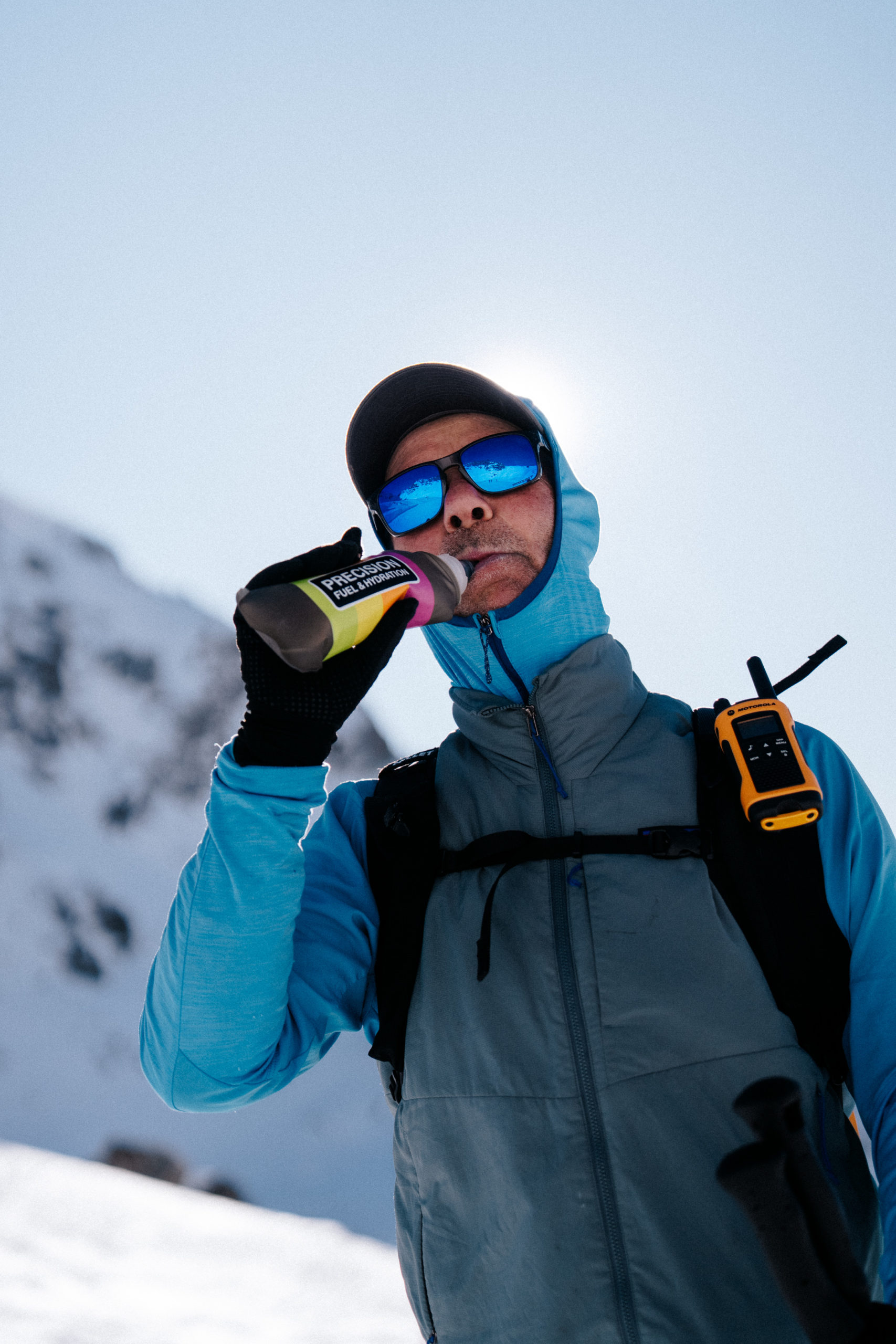
6. A Sample Week for Months 3- 4
Here’s how a typical week might look at this stage:
Day 1 – Strength (Lower body + core)
Step-ups, lunges, hip hinge, planks
Day 2 – Endurance (moderate)
45-60 minutes of steady cardio (cycle, row, brisk walk, or jog)
Day 3 – Conditioning
Weighted pack walk (60-90 minutes) or hill repeats
Day 4 – Strength (Full body)
Step-ups or squats, upper body pulls/pushes, core
Day 5 – Long Endurance
90 minutes to 2 hours, ideally outdoors on mixed terrain
You can move days around to fit your life. The key elements are:
- 2 x strength
- 1 x conditioning
- 2 x endurance (one longer)
Small, consistent effort adds up. You’re not aiming for perfection – you’re aiming to arrive in Verbier feeling prepared, not overwhelmed.

Starting Late? It’s Not Too Late – You Can Still Be Ready
If you’re joining the challenge now and haven’t started training yet, don’t panic. Many participants begin in late November or December – and plenty arrive with a solid fitness base from cycling, running, gym work or other sports.
You don’t need to complete every phase perfectly to succeed.
With consistent training in Months 3-4, followed by the Mountain Ready and Fine Tuning phases, you can absolutely arrive in Verbier feeling strong, prepared and confident.
What matters most isn’t when you start –
it’s that you start now.
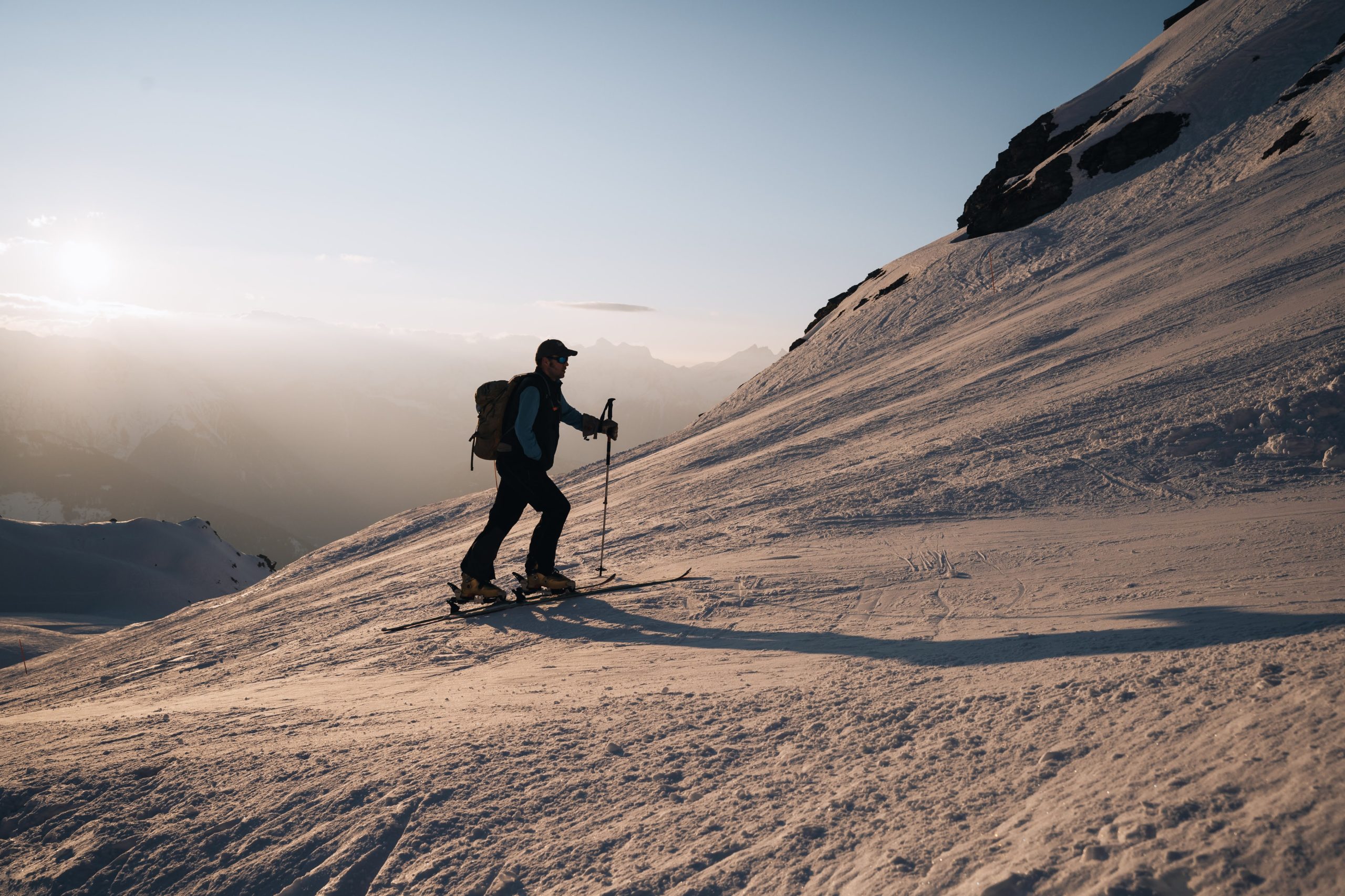
What Happens After Month 4? Your Final Road to the Alps
If you’re looking ahead and wondering what the rest of the journey looks like, here’s the simple structure that takes you from where you are now to the start line.
Everest in the Alps training follows a periodised approach – building up gradually, then easing off so you arrive in peak condition.
Phase 1 – Consolidation (September to mid-November)
You build your base: consistent sessions, 60-90 minutes of steady endurance, and core strength. This is the phase that Months 1-4 have covered.
Phase 2 – Mountain Ready (mid-November to January)
Endurance grows further, with sessions of around 120 minutes where possible, and more work outdoors. Strength becomes slightly sharper and more dynamic, and you may add in intervals to prepare for the occasional intense pushes you’ll make on steeper sections.
Phase 3 – Fine Tuning (January to mid-February)
By this point, you’re fit. Fine tuning is about refining, not overloading.
You might:
- Add weight to your pack to mimic challenge conditions
- Practise balance and stability work
- Focus on ski-touring style movements and control
The goal is to feel efficient, confident and strong – not exhausted.
Phase 4 – Tapering (Final 2 weeks)
The last phase is often the most overlooked – and one of the most important.
In the final two weeks before the challenge, you reduce your training volume to allow your body to recover, adapt and absorb all the work you’ve done.
In the taper, you will:
- Cut endurance sessions back to around an hour, twice a week
- Keep strength work light and simple
- Focus more on mobility, stretching, and looking after any niggles
- Prioritise sleep, nutrition, and stress management
You won’t lose fitness in this time – you’ll simply arrive in the Alps fresh, resilient, and ready for four big days on the mountain.
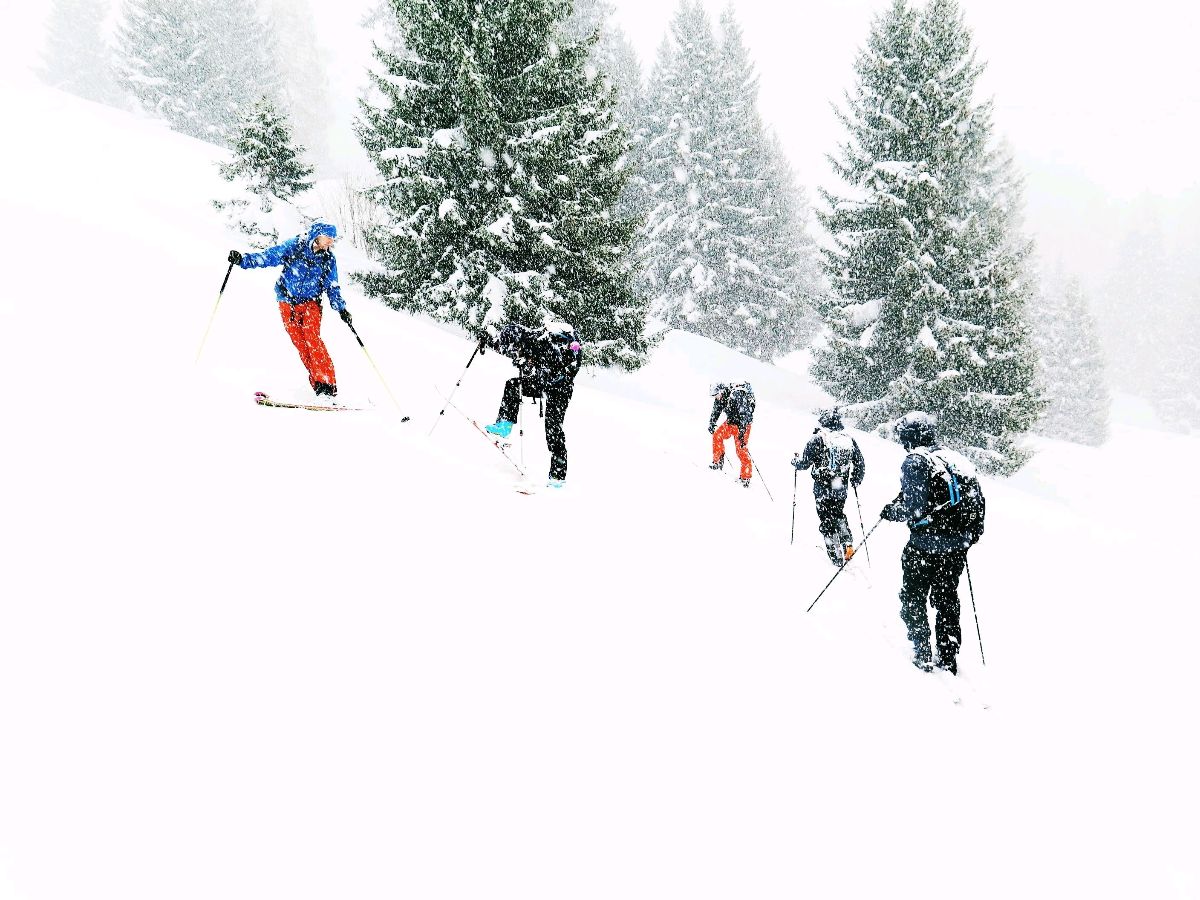
Your Summit Is Getting Closer
Months 3 and 4 are where everything starts to come together. Your sessions are longer, your legs are stronger, your mindset is steadier – and the Alps start to feel less like a distant idea and more like a real, achievable goal.
You don’t have to be perfect. You don’t have to hit every session.
But if you keep showing up, week after week, you’ll be amazed at how far you can go.
When the snow crunches under your skis, the headtorch beam picks out the first climb of the day, and the sun starts to rise over Verbier, you’ll know that every step, every session, and every small choice in Months 3 and 4 helped get you there.
Always consult your doctor or a qualified trainer before beginning a new exercise programme, especially one as demanding as Everest in the Alps.


